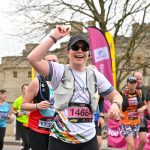Updated shielding Guidelines
Wales
The Chief Medical Officer for Wales has said that shielding should continue until the 16 August 2020. If you are shielding you should have received a letter to tell you this and what to do next. The Chief Medical Officer for Wales will write again to you advising what to do after 16 August 2020. If you haven’t had a letter and think you should have done, then discuss this with your GP.
Shielding is for your protection. It is strongly advised that you to follow this guidance but it is your decision to make. This will be a deeply personal decision and if you are unsure then speak with your family and friends about this, and with your healthcare professionals, if necessary.
Who should be shielding?
Only people (both children and adults) with the most serious underlying health conditions are being advised to shield themselves. For people living with a brain tumour this will be people who are undergoing radiotherapy and/or chemotherapy.
If I am shielding, what can I do?
If you have been shielding at home you can now leave home to exercise or meet outside with people from another household.
You should strictly follow physical distancing (2 metres or 3 steps away from another person) and you should practice good hygiene using a hand sanitiser and avoiding touching things touched by others.
You should stay close to home so you do not have to use a toilet that is not your own and you should not go anywhere indoors other than your own home.
Physical distancing within the home should continue where possible.
The advice has changed because:
1) The number of people who have Coronavirus in Wales has gone down and so the risk of you catching the virus has reduced.
2) We have learned more about how Coronavirus behaves. We know the virus does not spread as easily outside as it does indoors
3) Staying at home for long periods of time can affect your health and well-being.
Northern Ireland
The COVID-19 virus still poses a high risk if someone who is shielding is exposed to it. However, infection levels in the community are now falling so the risk of exposure is significantly less than it has been. As this risk is lower, the Chief Medical Officer for Northern Ireland has updated the guidance if you are shielding.
From 6 July, and if the risk continues to be low, people who are following the shielding advice are able to meet up to six people outside of their home, as long as social distancing is strictly observed.
If you are shielding alone, from 6 July you can also form a support bubble with one other household. Where you form a bubble:
- social distancing is not required with the other household in your bubble; this will allow you to visit, stay over and spend more time with the second household
- the second household can be of any size; and
- both households should not be part of more than one bubble and should continue to socially distance outside the bubble.
You can find more information on support bubbles on the following page:
People who are shielding remain vulnerable and should continue to take precautions. It is still best to stay at home as much as possible until shielding is paused.
Pausing of shielding guidance
From 31 July, it is anticipated that shielding for extremely vulnerable people will be paused. More information is available on the following page:
Scotland
The Scottish Government has sent out letters to those at high risk of severe illness from coronavirus. If you’ve had one of these letters, these are the things you need to do:
- stay at home as much as you can, until at least 31 July
- avoid going places that are indoors
- keep 2 metres away from people, even those you live with
- if you have not already, send your Community Health Index (CHI) number to the SMS Shielding Service – both your CHI number and the mobile number for the SMS Shielding Service are in the letter
Going outdoors
As long as you do not live in a residential care or nursing home, you can:
- go out for things like a walk, wheel, run or cycle, as much as you want
- meet in a group of up to 8 people outdoors – try to avoid meeting with people from different households on the same day
- travel in a car, either driving yourself or being driven by someone you live with – try not to go in a car with people you do not live with
- take part in a non-contact sport or activity, such as golf, angling or outdoor swimming
When outdoors, you should:
- try to avoid touching objects and surfaces
- stay within your local area – this is roughly within 5 miles of your house
- maintain strict physical distancing, also known as social distancing, at all times, even if you’re out with someone you live with, or with your usual carer
- try to choose times and areas that are quiet
- stay close to home so you do not have to use a toilet that is not your own
- wash your hands for at least 20 seconds as soon as you get back home
How shielding might change in the future
You need to have the right information to fully understand individual risks. This will help you to decide things like whether to go to the shops or ask family and friends to visit. This helps you to take back more control over their lives while still staying safe.
Over the summer, the Scottish Government will work towards:
- giving people updated clinical evidence about their conditions and what that means for their risk from coronavirus
- helping people to understand the changing infection rate in their local area
- giving this information in a way that is accessible, understandable and is helpful
- giving access to support to help people make informed choices about their lives
- supporting people to put their choices into practice
Keeping up-to-date with changes to shielding
The Government will keep giving updates, so that you know what is happening and what to expect. It will contact those who have been asked to shield about any changes to the advice before the end of July. This will be by letter and through the SMS Shielding Service to send updates to mobile phones.
More information can be found here:
https://www.gov.scot/publications/covid-shielding/pages/overview/








